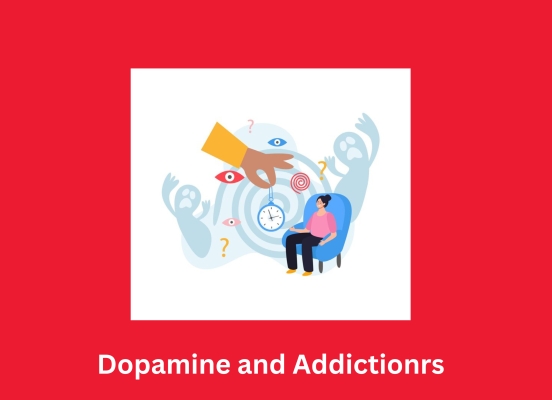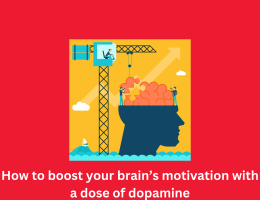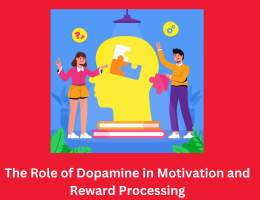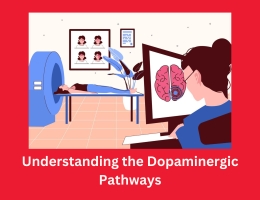
Dopamine and Addiction: Exploring the Link between Motivation and Substance Use Disorders
- By admin --
- Wednesday, 13 Mar, 2024
Compulsive drug-in search of and drug-taking movements despite dire results are characteristics of addiction, a multifaceted infection. Although there are numerous variables that go into the formation and preservation of dependancy, dopamine—a neurotransmitter connected to motivation and reward—performs a critical aspect inside the technique. In addition to illustrating how dopamine influences motivation and how it can play a role inside the emergence of drug dependancy, this newsletter examines the complex link between dopamine and dependancy.
Known as the "pleasure neurotransmitter," dopamine plays a role in rewarding behaviour reinforcement and in memorising the rewarding qualities of stimuli. When capsules of abuse are used to treat addiction, they take over the brain's natural praise system, which disrupts dopamine signalling and causes enormous modifications to motivational tactics. The substances causing addiction, such as cocaine, methamphetamine or heroin function by affecting dopamine neurotransmission in significant brain regions involved in motivation and reward processes directly or indirectly.
Particularly concerned in mediating the worthwhile consequences of medicine of abuse is the mesolimbic dopamine pathway, which extends from the ventral tegmental vicinity (VTA) to the nucleus accumbens and other limbic systems. When someone takes a drug, the nucleus accumbens experiences a sudden release of dopamine, which results in feelings of pleasure and euphoria. This dopamine spike then reinforces the drug-taking behaviour, establishing a potent association between drug use and reward.
Medication connected to abuse may result in neuroadaptive changes in the reward system of the brain, which may lead to tolerance, sensitization, and addiction over time. Long-term drug use upsets the sensitive stability of dopamine neurotransmission, which leads to alterations to synaptic plasticity, a lower in dopamine launch, and a discount in receptor sensitivity. Due to these neuroadaptations, people need progressively higher dosages of drugs to experience the same pleasurable effects, which contributes to the development of dependency.
Also, aside from the mesolimbic pathway, there are some other brain areas playing a role in motivation and decision-making who can be derailed in their functioning When there is abnormal action going on at dopamine cells within the neural paths which underpin addiction. The mesolimbic dopamine machine interacts with the prefrontal cortex (PFC), a region vital for executive approaches like impulse control, decision-making, and self-regulation, to govern prompted behaviour. Long-time period drug use harms the prefrontal cortex (PFC), which has an effect on cognitive features connected to decision-making and inhibitory manage. As a result, it creates a cycle of reliance and drug-seeking behaviour.
Furthermore, addiction implies dopamine signals are not simply about rewards or replay but additionally other motivation elements including looking or dropping out. Even when no immediate benefits are available, compulsive drug-seeking actions are predominantly dependent on elevated dopamine in anticipation of drug ingestion for anticipated drug-derived prizes. Conversely, discontinuation evokes dysphoric symptoms and reduced dopamine which is connected
Individual versions in vulnerability to addiction are in large part inspired via genetic factors as nicely. Gene variants encoding dopamine receptors, transporters, and other dopamine gadget components can affect how someone reacts to tablets of abuse and the way in all likelihood they're to come to be addicted. In addition, the combination of genetic predispositions and environmental variables including stress, trauma, and social influences might raise the chance of addiction even more.
Targeting dopamine dysregulation and reestablishing healthy motivational mechanisms are the goals of addiction treatment strategies. Medications that alter dopamine receptors or lower dopamine release are examples of pharmacological therapies that can help with withdrawal symptoms, lessen drug cravings, and aid in sobriety. Behavioural treatments, including as motivational interviewing, contingency management, and cognitive-behavioral therapy (CBT), work to change unhelpful thought and behaviour patterns linked to addiction and increase the desire to be sober.
Simply put, dopamine is a neurotransmitter that affects motivation, reward processing as well as decision making which are essential components for addiction development. There is a relationship between addiction disorder progression and continuing substance abuse problem due to alteration of pathways for this brain transmitter such that individuals become obsessed with propelling themselves towards taking drugs at all costs thereby creating endless loops from which escape seems impossible unless solutions are found at its roots within someone’s head. In order to help cure addiction from its neurological grounds so as to enable full long-term rehabilitation, there is a





